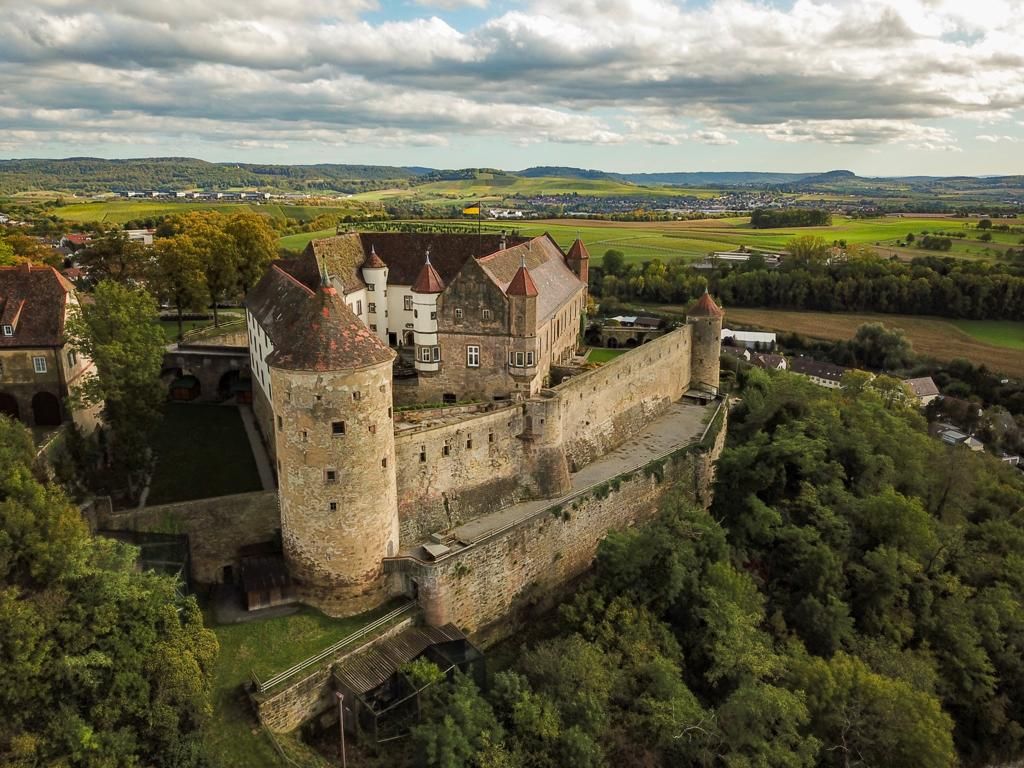Stettenfels Castle: A Historic Fortress in Untergruppenbach, Germany
Visitor Information
Google Rating: 4.4
Popularity: Medium
Google Maps: View on Google Maps
Official Website: www.burg-stettenfels.de
Country: Germany
Civilization: Medieval European
Remains: Military
History
Stettenfels Castle stands on a sandstone ridge east of Untergruppenbach’s historic center in Germany. It was built in the 11th century, likely as an imperial fortress during a period when many castles were established in the region. Ownership changed frequently in its early centuries, reflecting the shifting political landscape of the Holy Roman Empire.
In the early 14th century, the castle’s ownership was divided. The von Hirschhorn family acquired parts of it from the Counts of Württemberg, while other sections belonged to the patrician Wigmar family and the noble von Helfenberg family. After the von Helfenberg line ended in 1356, their holdings passed to Burkhard, Knight of Sturmfeder. His son, Burkhard the Younger, expanded the estate through marriage with the Hirschhorns, founding the Stettenfels branch of the Sturmfeder family.
By the late 15th century, the von Helmstatt family controlled the castle. During the Landshut War of Succession in 1504, Duke Ulrich of Württemberg captured it. In 1507, he granted the castle as a fief to Marshal Konrad Thumb von Neuburg. Konrad’s son, Hans Konrad, sold the property in 1527 to Philipp von Hirnheim, who introduced the Reformation to the nearby village of Gruppenbach.
Anton Fugger, a member of the wealthy Fugger family, bought the castle in 1551. His son Hans commissioned a Renaissance-style renovation in 1576, led by architect Wendel Dietrich. After a fire in 1594, Dietrich rebuilt the damaged sections. In the 18th century, the Fuggers attempted to establish a Capuchin hospice on the grounds, but Württemberg authorities destroyed these buildings in 1735.
Duke Karl Eugen of Württemberg purchased Stettenfels Castle in 1747. The local municipality acquired it in 1828 and 1829, retaining usage rights even after subsequent sales. Throughout the 18th to 20th centuries, the castle changed hands multiple times, owned by individuals such as tanner Friedrich Korn, merchant Anton Mayer, landlord Friedrich Bürkle, and farmer Christian Hildt.
In 1901, lawyer Dr. Walter Putsch bought the castle and renovated it in a contemporary style. The von Haldenwang family owned it from 1918, followed by shoe manufacturer Siegfried Levi in 1924, who established a stud farm on the property. On October 5, 1937, the Nazi regime forcibly transferred the castle from Levi in a process known as “Aryanization.” In 1939, parts of the 16th-century structures were demolished to build a Nazi “Ordensburg,” a type of training center, but World War II halted the project.
After the war, American authorities administered the castle. From 1946 to 1951, the Evangelical Church used it as a retirement home. The property was then returned to Levi’s widow. In 1957, Friedrich Spieser purchased the castle, and in 1994, architect Roland Weimar became the owner, maintaining it to the present day.
Remains
Stettenfels Castle is built around a triangular courtyard, accessed by a large bridge crossing a wide moat. The moat surrounds the castle and includes three old defensive towers. Visitors can reach the moat, which now features a permanent stage for events.
The gatehouse opens into the courtyard, which contains a fountain and is enclosed by various residential buildings. A notable feature is the historic staircase tower in the courtyard, which dates mainly from the Renaissance remodeling carried out by Wendel Dietrich in 1576 and later restorations. Most buildings visible today reflect this Renaissance style.
Until the 20th century, the residential building and staircase tower had timber galleries on their outer walls. The original ground-floor archways of the economic buildings have mostly been filled in with brick. East of the main castle complex, beyond the moat, are historic farm buildings alongside modern restaurant facilities.
The castle grounds include agricultural areas such as vineyards on the slopes and a stud farm on the plateau. Overall, the castle is well preserved, with its defensive structures, residential buildings, and courtyard features largely intact and adapted for current use.










